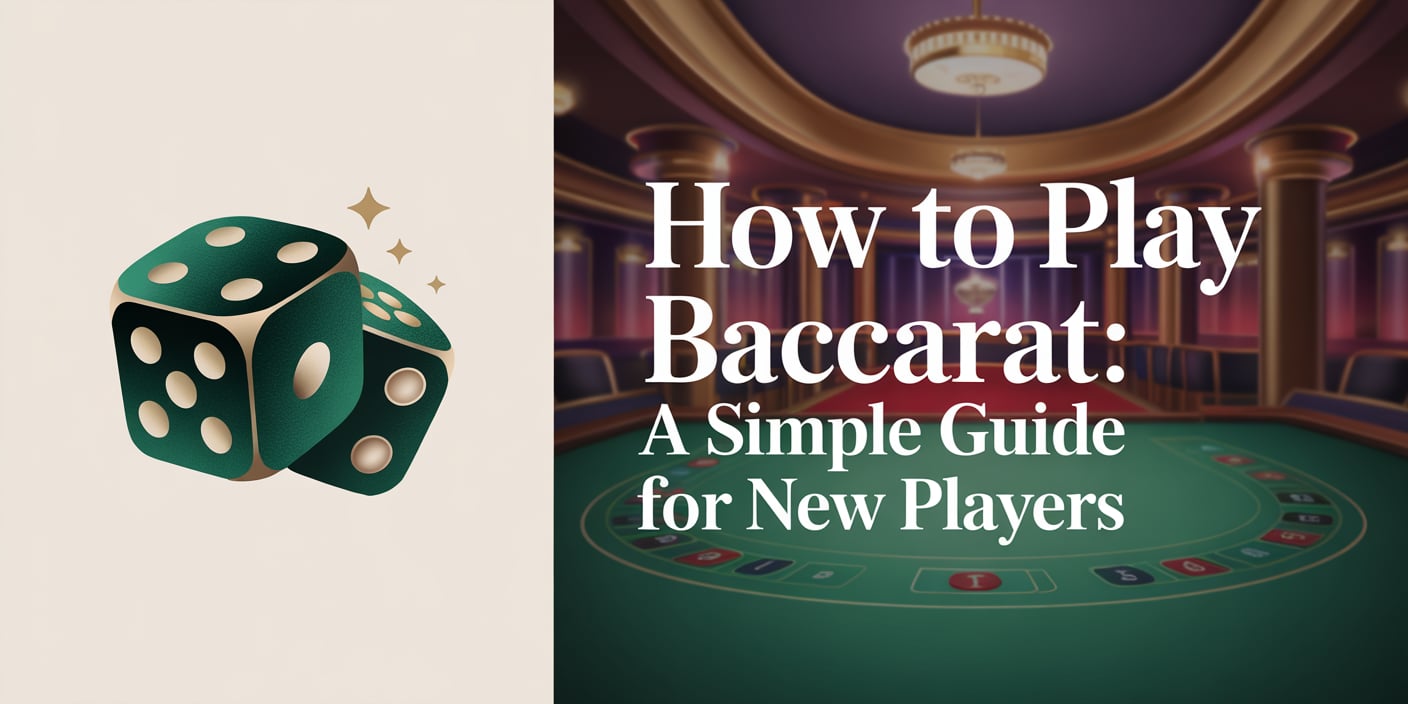How to play Baccarat a simple guide for new players

Baccarat is a fun game at casino that might look a bit fancy, but believe me, it’s really easy to learn. It’s fast, exciting, and you don’t need to rememb͏er lots of hard rules. The main idea is that you’re betting on which hand—the Player or the Banker—will get closest to nine, or if it’ll finish in tie. The best part? You doesn’t have to be big spender to enjoy it! If you’re thinking of playing online, just make sure to choose reliable baccarat sites so you can feel sure about the game’s truth and safety.
Basics of Baccarat
There is a point value assigned to each card of baccarat:
- Tens, Jacks, Queens, Kings = 0 points
- Aces = 1 point
- 2 to 9 cards = face value
In case the sum of the cards' value is greater than 9, deduct 10 from the value. For example, you are dealt a 7 and an 8, the value is 15, but the value result is 5 (15 - 10 = 5).
Dealing Cards and Game Rules
In baccarat, play commences when the dealer deals two cards to each of the Player and the Banker. The objective is to possess a hand value as close to 9 as possible.
- The Player draws a third card if the value is 0 to 5.
- If the value is 6 or 7, the Player stands (no further cards).
- If the Player has 8 or 9, it's a "natural hand," and the game is already won. A natural 9 beats a natural 8 — so if the Player has 8 and the Banker has 9, the Banker wins.
How the Banker's Hand is Decided
The Banker receives two cards as well, but the third card rules are a bit more complicated:
- If the Banker's hand value is 7 to 9, they stand.
- If the Banker's hand is less than 7, they can take a third card depending on the Player's third card (if taken).
Calculating Results and Closing the Game
After all cards required are dealt, both hands are compared based on their totals. The hand whose total is closest to 9 wins. In the event of a tie, players' bets are refunded.
Baccarat is one of those games where every second matters, but ultimately is a matter of luck. The best bet is to bet your money on the Banker statistically, but do remember — baccarat is an odds game and there is no system for sure winning.
Strategies and Tips for Players
- Bet on the Banker: The Banker hand comes out slightly more often statistically. Commission (usually 5%) is usually taken from Banker wins.
- Avoid Tie Bets: Tie bets are very highly paid (usually 8:1 or 9:1), but a tie is not likely and this is a bad bet.
- Know the Odds: Baccarat is an odds game. Knowing the scoring system and odds will enable you to make better decisions.
While strategy is not as central to baccarat as it is to poker or blackjack, one may still choose the best bet:
- Banker Bet: Best winning chance but at a commission.
- Player Bet: Lower winning chance than the Banker but commission-free.
- Tie Bet: Worst winning chance but with bigger returns, suited for risk-loving gamblers.
Conclusion
Baccarat is more than a game of chance, but an attempt to think through the manner in which you wager. Simple rules provide an exhilarating and entertaining environment with plenty of opportunity for success. You will not have to perform a disproportionate amount of calculus in your head while playing the game, but having some simple-to-comprehend rules and wagering tips will make you at ease at the table.
Frequently Asked Questions (FAQ)
If both the Banker and the Player have 6 points in the initial deal, is it a draw?
Yes, if both are at 6 points after the first two cards, then it is a draw. The round of the game is over, and bets are returned.
What is a minimum bet in baccarat?
Minimum bets for baccarat are also set by the casino. The minimum United States bet is typically $20–$25, but may be raised or lowered at the table and the casino's discretion.
What is the highest possible baccarat score?
The highest baccarat value is 9 because only the final digit of the total of the value on a card is counted. Any value greater than 9 has 10 deducted from it, and the value is anywhere from 0–9. 7 and 8 amount to 15, and the 15 minus 10 is 5.





